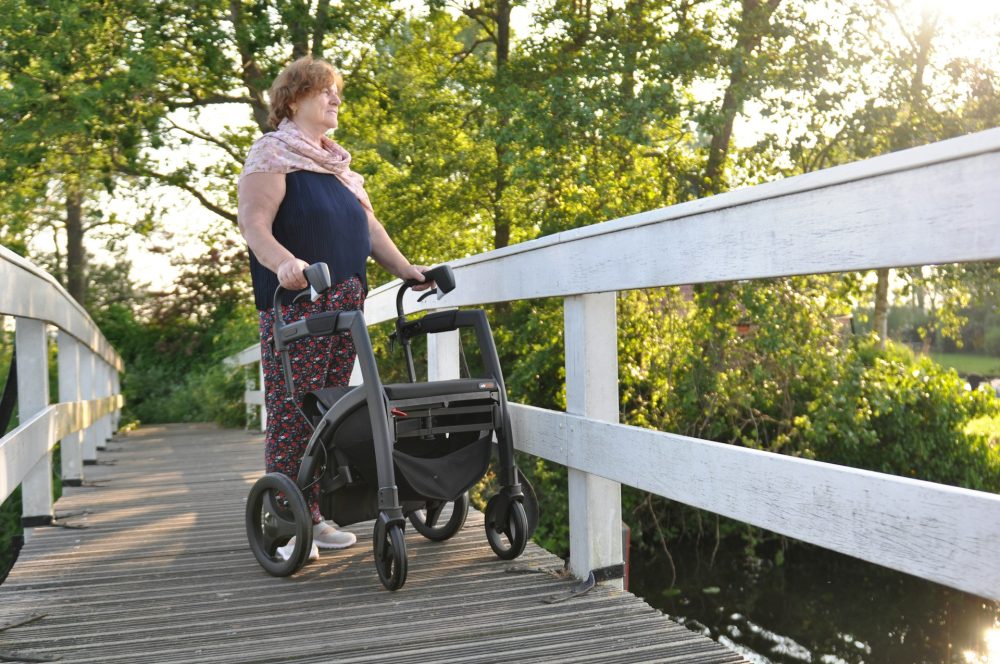Biotech
Grifols Begins a Study to Detect Early Signs of Parkinson’s Disease in Plasma
Grifols secured a $21 million grant from the Michael J. Fox Foundation to study plasma biomarkers for early Parkinson’s detection. The 10-year Chronos PD project will analyze longitudinal plasma samples, potentially revolutionizing diagnosis and therapies. Early detection is critical, as current methods often diagnose too late for intervention. Grifols’ plasma expertise enhances research possibilities.

Grifols has received a $21 million (€20.49 million) grant from the Michael J. Fox Foundation for Parkinson’s Disease Research (MJFF) to conduct a pioneering study to detect early signs of Parkinson ‘s in plasma samples .
In a statement on Tuesday, the company explained that the aim of the study is to identify plasma-based biomarkers that could indicate the likelihood of a person developing the disease many years before their clinical diagnosis.
“The initiative could accelerate the discovery of new diagnostic tools, as well as the identification and development of novel therapies that modify the evolution of the disease.”
He noted that the initiative, called Chronos PD, “could accelerate the discovery of new diagnostic tools, as well as the identification and development of novel therapies that modify the progression of the disease . ”
Parkinson’s affects more than six million people worldwide and is caused by brain cells that produce dopamine, a chemical that coordinates movement, stopping working or dying. Currently, it is diagnosed through medical history, physical examination and brain imaging tests, but “by the time the disorder is detected, it is often too late to slow its progression , let alone reverse the damage.”
“This makes early detection biomarkers one of the most urgent medical needs to advance therapeutic interventions that can stop or even reverse the disease before it is too late ,” the company added.
“By the time Parkinson’s disease is detected, it is often too late to slow its progression, let alone reverse the damage.”
Grifols’ study will cover a period of 10 years
The study will allow the analysis of plasma samples collected longitudinally, that is, from the same people at several points in time, covering a period of up to 10 years, to track how different plasma proteins evolve over time in people with Parkinson’s.
Grifols study “could help establish an early warning system for the onset of the disease , ” and will use plasma samples the company has collected over the past 15 years.
“Well-conversed” samples
Grifols’ chief scientific innovation officer, Jörg Schüttrumpf , explained that this initiative “takes advantage of Grifols’ unique collection of well-preserved plasma samples, the most advanced technological platforms” and the company’s expertise in plasma proteomics.
“By the time Parkinson’s disease is detected, it is often too late to slow its progression, let alone reverse the damage.”
“Going back in time to look for the earliest signs of PD, even before symptoms appear, has the potential to revolutionize disease management ,” he added. The goal is to “ accelerate ” and ultimately “ develop new diagnostics and disease-modifying therapies ” that could, textually, mitigate or prevent its manifestation.
MJFF Senior Vice President for Translational Research Shalini Padmanabhan explained that identifying reliable biomarkers for Parkinson’s “is essential for making an earlier diagnosis and developing more effective treatments.” She added that Grifols ‘ research aims to “help understand the biology of people who may be at risk of developing the disease.”
__
(Featured image by Rollz International via Unsplash)
DISCLAIMER: This article was written by a third party contributor and does not reflect the opinion of Born2Invest, its management, staff or its associates. Please review our disclaimer for more information.
This article may include forward-looking statements. These forward-looking statements generally are identified by the words “believe,” “project,” “estimate,” “become,” “plan,” “will,” and similar expressions. These forward-looking statements involve known and unknown risks as well as uncertainties, including those discussed in the following cautionary statements and elsewhere in this article and on this site. Although the Company may believe that its expectations are based on reasonable assumptions, the actual results that the Company may achieve may differ materially from any forward-looking statements, which reflect the opinions of the management of the Company only as of the date hereof. Additionally, please make sure to read these important disclosures.
First published in iSanidad. A third-party contributor translated and adapted the article from the original. In case of discrepancy, the original will prevail.
Although we made reasonable efforts to provide accurate translations, some parts may be incorrect. Born2Invest assumes no responsibility for errors, omissions or ambiguities in the translations provided on this website. Any person or entity relying on translated content does so at their own risk. Born2Invest is not responsible for losses caused by such reliance on the accuracy or reliability of translated information. If you wish to report an error or inaccuracy in the translation, we encourage you to contact us

-

 Biotech6 days ago
Biotech6 days agoChai Discovery Becomes a Unicorn with $130 Million Series B to Accelerate AI-Driven Drug Design
-

 Africa2 weeks ago
Africa2 weeks agoMorocco Allocates 1.3 Billion Dirhams to Boost Startup Ecosystem Under Digital 2030 Strategy
-

 Crypto1 week ago
Crypto1 week agoAAVE Community Challenges Aave Labs Over Governance and Control
-

 Crowdfunding6 days ago
Crowdfunding6 days agoDeep Learning Italia Launches €400K Crowdfunding to Bridge Italy’s Tech Skills Gap

























